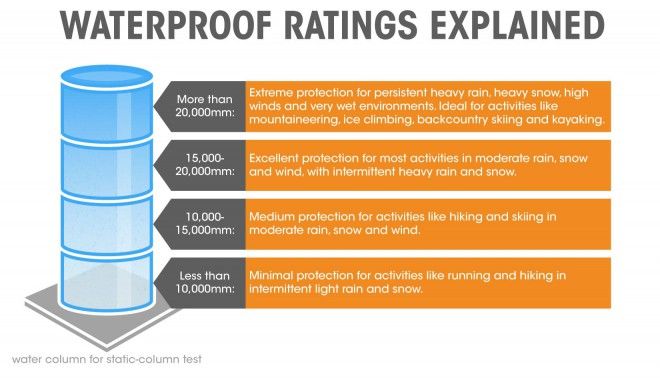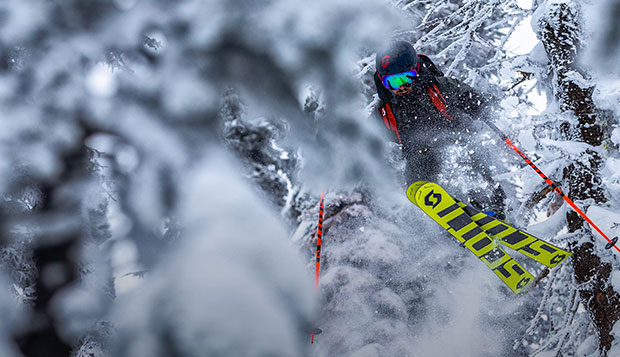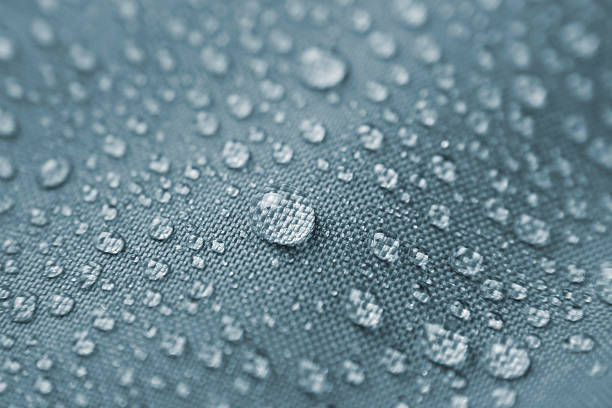
WATERPROOF OR WATER REPELLENT
how is that to be understood?
Suppose I have the misfortune to be followed by rain and thunderstorms during my ten-day hut hike. Now the saying proves true: There is no bad weather, only bad clothing. In such a situation, only the right layer of rain can save me from wetness, cold, blisters and pressure points.
But which material keeps really tight? How can I understand the difference between good and bad rainwear?
WHICH WATER COLUMN VALUE DO YOU REALLY NEED?
The decisive factor here is what to do in heavy rain and what the fabric has to withstand, i.e. whether it is exposed to higher pressure in addition to water. It makes a difference whether I'm just standing in the rain with a rain jacket, whether strong wind is also pressing on it, or whether the straps of a bagpack exert pressure on rain-wet shoulders and backs, pressing the water through the fabric. When sitting and kneeling, there is a high pressure on the clothing, the same applies when sitting, lying down and standing in a tent. In these cases the water column should be as high as possible.
Some examples:
- Tent floor and tarpaulin: at least 5,000 mm water column
- Weatherproof trousers with which you kneel or sit on a wet surface: from 15,000 mm water column
- Hardshell jacket designed for carrying a heavy backpack: from 20,000 mm water column
- If, on the other hand, weatherproof textiles are not exposed to any particular pressure, a significantly lower water column is sufficient
- Tent tarpaulins, outer tents and tarps: minimum 3,000 mm water column
- Waterproof trousers, which should mainly protect against splash water 10.000 mm water column
- Wind- and bicycle jackets, which are used without carrying a backpack 10.000 mm water column
- Hardshell jackets, which are designed to carry heavy backpacks, become waterproof from a water column of 20,000 millimeters. Without a backpack, jackets with a lower water column of 10,000 millimeters are sufficient.
SO WHICH WATER COLUMN DO I CHOOSE WHEN BUYING A JACKET?
The good news: Actually all hardshell jackets are waterproof, at least in our shop. Most of the established manufacturers such as Mammut or Jack Wolfskin start with a water column of at least 10000 mm and are well above what the standard defines as waterproof. Most of the rain jackets even have a value of 20.000 to 30.000 mm.
These values refer to new garments. Used, worn out textiles no longer have the same properties as when they were purchased.
In addition, when choosing waterproofing, it is essential to consider the intended use.
IMPORTANT: Waterproof your jacket regularly! On a well impregnated garment, water rolls off before it can be pushed through by the wind, for example.
I WANT YOU TO KNOW THAT TOO:
Breathable but waterproof: The 3-layer laminate GORE-TEX® Pro.
A decisive factor is the BREATHABILITY, the so-called water transmission resistance of a fabric. What good is a jacket that is so tightly impermeable on the outside that it does not wick away the sweat you produce and you get wet on the inside? The decisive factor here is a membrane such as GORE-TEX, which allows a minimum of breathability.





